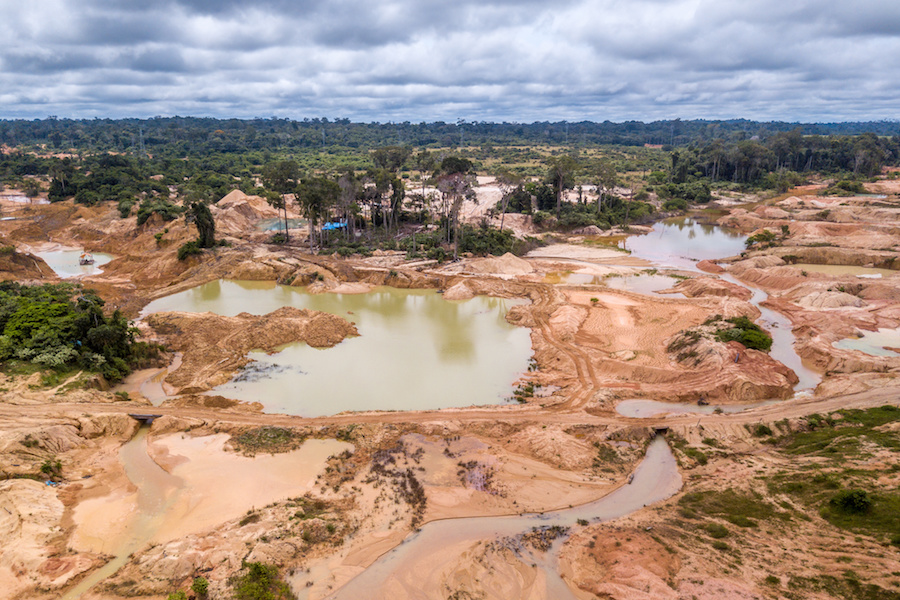Crypto Mining Finds a New Home in Brazil
By
David Goldfarb
Last updated:
October 1, 2025
First Published:
October 1, 2025

Photo: Mining.com
The global landscape of cryptocurrency mining is evolving rapidly. Once concentrated in a handful of countries, mining operations are now on the move. Brazil has emerged as a new hotspot, attracting miners with a combination of abundant renewable energy and unique grid dynamics. This shift is reshaping the economics of crypto production while highlighting the growing importance of sustainable energy solutions in the digital currency world.
The lure of renewable energy
Brazil generates a significant portion of its electricity from renewable sources, primarily hydropower and wind. This abundance of clean energy makes mining operations cheaper and more environmentally friendly than in regions reliant on fossil fuels. For miners seeking to maximize profitability while reducing their carbon footprint, Brazil presents a rare opportunity to align financial incentives with sustainability.
Grid constraints and flexibility
Brazilian electricity grids are designed to handle fluctuations in production and consumption. This feature allows miners to operate in a flexible manner, taking advantage of periods of excess energy supply. During times of lower demand, mining operations can scale up, effectively acting as a buffer for the grid. This relationship between miners and energy providers demonstrates a new model where digital currency production and national infrastructure can coexist.
Economic incentives for miners
The cost of electricity is one of the largest operational expenses for cryptocurrency miners. Brazil’s energy market provides competitive rates compared to other regions, making the country an attractive choice for large scale operations. By relocating or expanding to Brazil, miners can significantly reduce overhead costs while maintaining high output, improving overall profitability.
Impact on local communities
The influx of mining operations has implications beyond the balance sheets of companies. In regions where energy was previously underutilized, new mining facilities can create jobs and stimulate local economies. However, this growth must be managed carefully to ensure that local communities benefit without facing strain on infrastructure or energy availability.
Sustainability concerns
Despite the use of renewable energy, critics warn that large scale mining still consumes vast amounts of power. Even hydropower and wind have environmental costs and ecological impacts. Policymakers and industry leaders must collaborate to implement guidelines that allow mining to thrive while minimizing negative effects on ecosystems and local populations.
A competitive edge for Brazil
By attracting miners, Brazil positions itself as a key player in the global cryptocurrency ecosystem. The country could gain influence in how blockchain networks operate, while also encouraging technological investment and innovation. This competitive advantage extends beyond finance, signaling Brazil’s growing role in digital technology and energy solutions.
Lessons for other regions
Other nations observing Brazil’s success may seek to replicate this model. The combination of renewable energy availability, flexible grid infrastructure, and supportive policies creates a compelling case for mining relocation. Countries that can balance economic incentives with sustainability standards may soon see similar waves of investment.
Challenges ahead
Moving operations to a new country is not without obstacles. Miners must navigate regulatory approvals, taxation, and logistical complexities. In addition, fluctuations in energy supply due to weather patterns or seasonal variations can affect profitability. Companies that succeed in Brazil will need to combine technical expertise with strategic planning.
The future of mining in Brazil
Brazil’s rise as a mining hub signals a broader trend in the industry. Cryptocurrency operations are no longer tied to traditional locations but are increasingly moving where energy is abundant, affordable, and sustainable. As the world continues to grapple with climate change and energy demands, Brazil offers a glimpse into how the crypto industry can evolve responsibly while maintaining strong financial performance.
Popular articles
Subscribe to unlock premium content
Disney’s Timeless Magic and How the Entertainment Giant Continues to Shape Culture and Innovation

Imran Khan’s Economic Missteps Amid Political Chaos in Pakistan

The Philippines’ Digital Shift How Remittances and BPO Are Fueling Growth

Disney’s Timeless Magic and How the Entertainment Giant Continues to Shape Culture and Innovation

Imran Khan’s Economic Missteps Amid Political Chaos in Pakistan

Disney’s Timeless Magic and How the Entertainment Giant Continues to Shape Culture and Innovation









